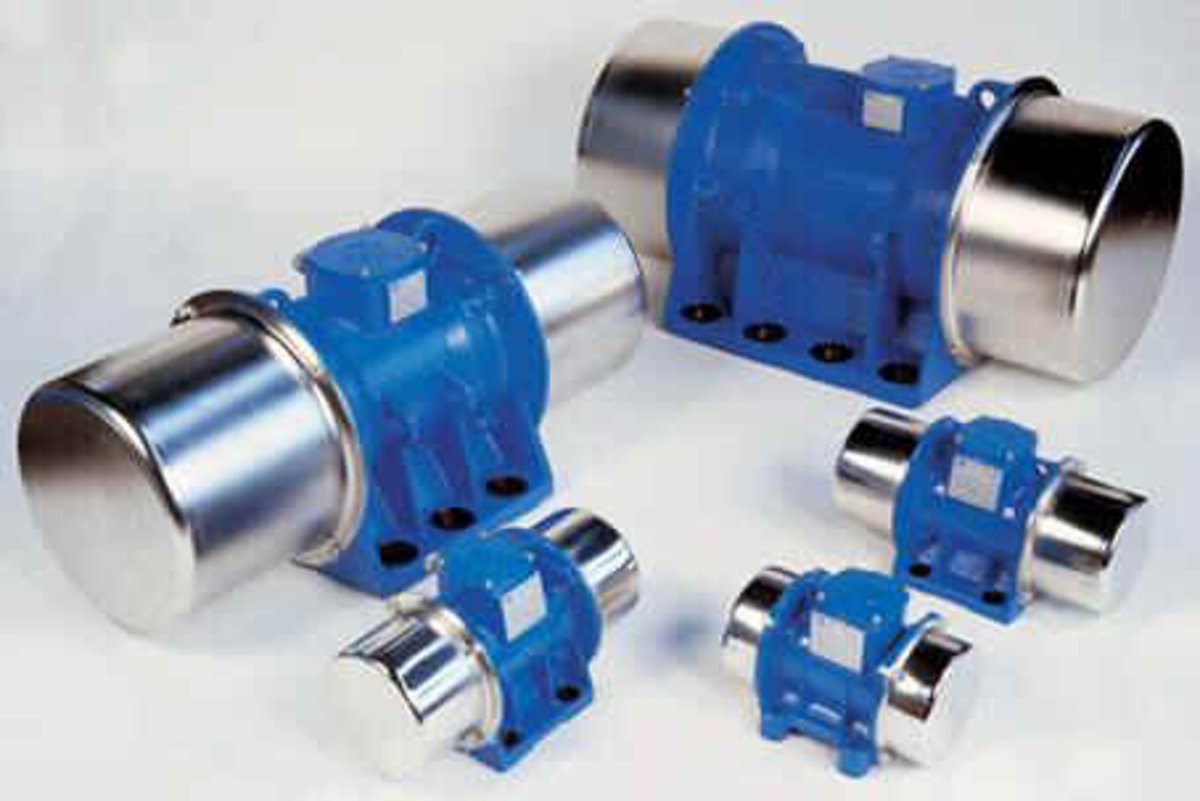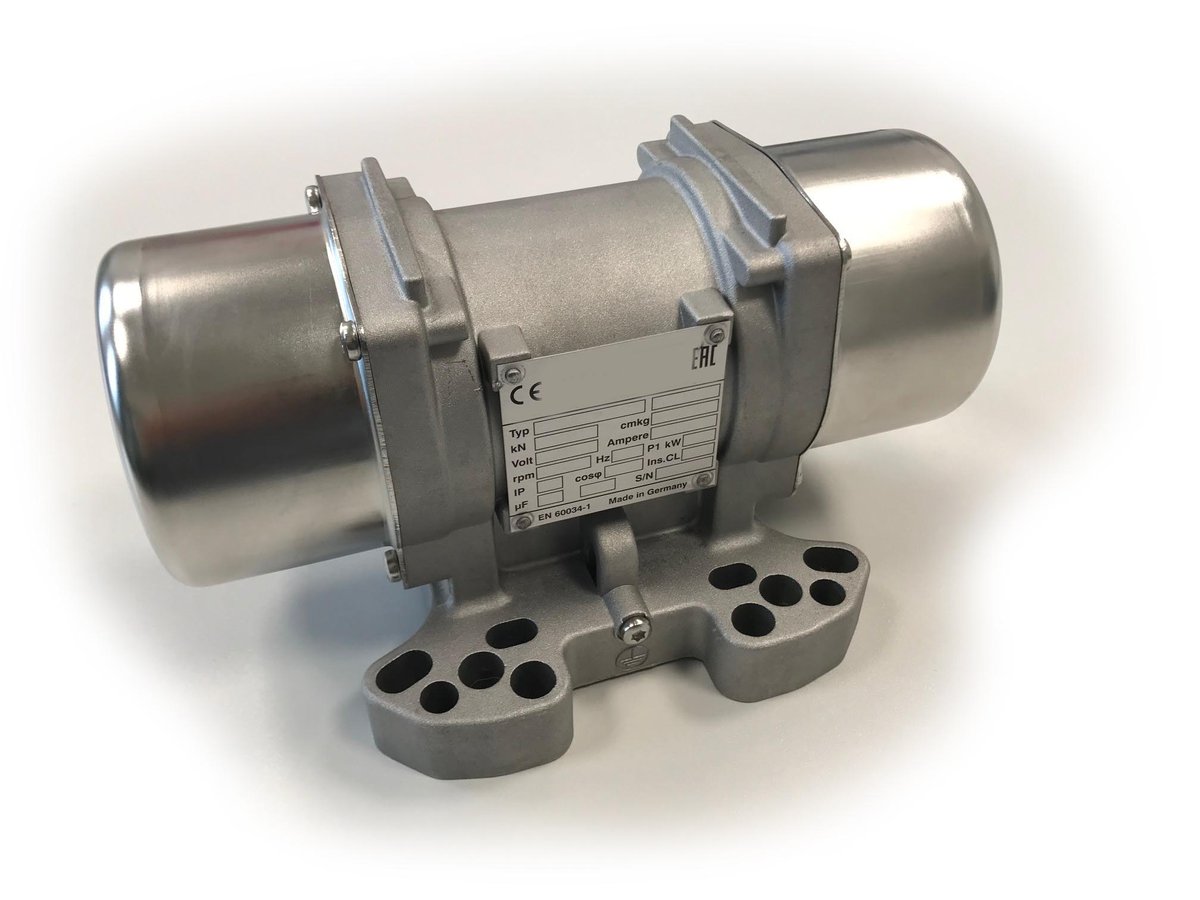Vibration motors are technical devices that generate and transmit mechanical vibrations by supplying energy. These vibration motors are mostly used in bulk material handling processes, for conveying, screening, loosening or material compaction and at neuralgic points in mechanical systems and many more.
Vibration motors (also called vibrators, vibration motors, unbalance motors, vibration motors, unbalance drives, vibrators or external vibrators) are specially manufactured for vibration technology machines in which bulk materials are conveyed, separated, compacted, distributed, loosened or sorted by vibration. Vibration motors can be varied depending on the application.
VV VIBRATION MOTORS
Wide product range with aluminum and spheroidal cast iron housing
Centrifugal force: 40 - 245,000 N
Frequency: 750 - 3,600 min-1
Common vibrator designs:
- Electric vibration motors with adjustable rotating unbalance weights
- Richter exciters or unbalance exciters with adjustable rotating unbalance weights
- Pneumatic vibrators with rotating unbalance weights
- Pneumatic vibrators with linear vibrating masses
- Pneumatic vibrators with vibrating and beating masses
- Beaters with beating mass
- Electromagnetic vibrators with vibrating mass
- Hydraulic vibrators with rotating unbalance
The vibration motors and vibrators are usually equipped with a foot or flange connection and can thus be coupled to common end applications of vibration machines and systems.
The vibration and impact pulses in vibration motors and vibrators are created by built-in unbalanced weights or masses, which generate alternating centrifugal forces through rotation or linear motion. These forces are absorbed by coupled components such as conveyors, silos or screening machines etc. and vibrate or shake them.
Do you need assistance with the selection or do you have questions about a specific device?
Then contact us, we will be happy to advise you!
When using the vibration motors, some safety instructions must be observed
All versions of vibration motors must not be used without the use of centrifugal weights and protective covers. It is especially important to secure the electrical connection, which must also be regularly checked for defects. If there are any irregularities in the connection cables, these must be rectified immediately to ensure the function of the vibration motors and the safety of your employees. Likewise, special explosion-proof vibration motors must be used in hazardous areas. Regular maintenance of the devices is essential.
Before mounting vibration motors, the supporting surface or screw-on surface should be thoroughly cleaned. The removal of grease, oil, rust and paint forms the basis for successful assembly. Furthermore, the vibration motors to be mounted should be checked for their perfect condition so that they can then be mounted using suitable tools.
The vibration motors may only be connected by an authorized electrician, as the connections must comply with the regulations of the power supply company. Equally important here is the thorough sealing of cable glands, terminal box covers and dummy plugs. Be sure to leave this work to a professional.
Of course, there are spare parts for vibration motors. For that, you don't need to do anything but contact us:
Tel: +49 2241 16960
e-mail: webmaster(at)aldak.de
In order to help you in the best possible way, we need the following data for processing:
- Vibration motor type
- Serial number
- Description of the required spare part
- Number of required spare parts
By transmitting the above data, incorrect deliveries can be avoided.
 Deutsch
Deutsch English
English Nederlands
Nederlands


